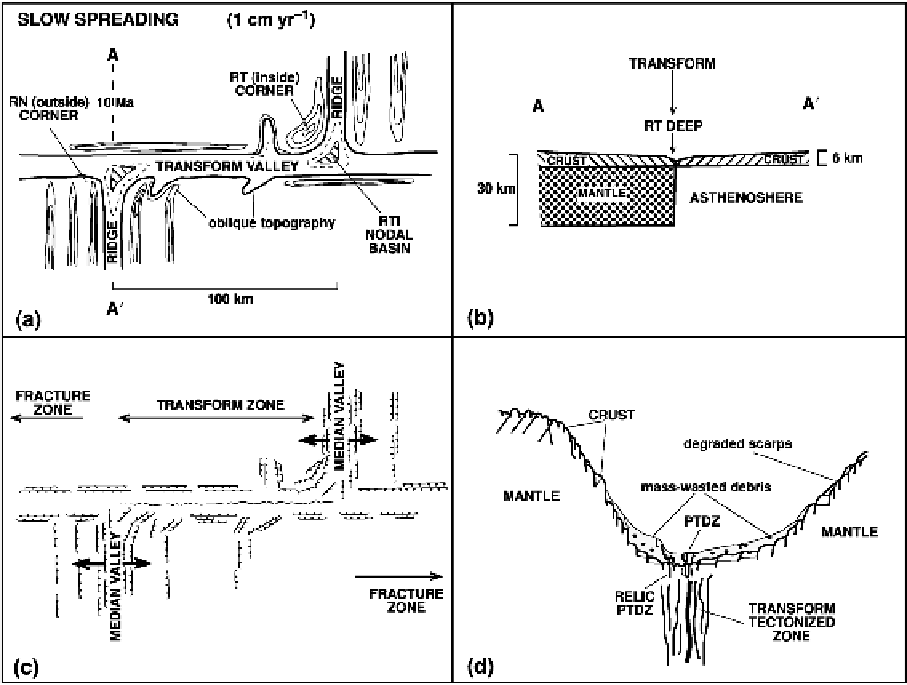Geoscience Reference
In-Depth Information
Figure 9.34.
A slow-slipping transform fault with an offset of 100 km (10 Ma):
(a) topography, (b) schematic vertical cross section, (c) structural grain and (d)
geological cross section. A fast-slipping transform fault with an offset of 100 km
(0.8 Ma): (e) topography, (f) schematic cross section and (g) structural grain. (After
Fox and Gallo (1984) and Goud and Karson (1986).)
associated with the ridge offset (i.e., the shear zone). The zone of interconnecting
faults that are active at present (the active fault zone) is called the principal
transform displacement zone (PTDZ). At the ridge-transform-fault intersection
(RTI), there is a deep, closed-contour depression called a nodal basin. The junc-
tions of the median-valley walls with the transform-valley walls are called the
ridge-transform (RT) and ridge-non-transform (RN) corners or alternatively the
inner corner (IC) and outer corner (OC). On slow-spreading ridges the inside
corner generally has elevated topography while the outside corner is deeper. This
can be interpreted as the IC being the elevated footwall of a large detachment
fault (Section 9.4.1)inapaired half-graben model for the ridge axis.
On fast-spreading ridges, transform faults need not occur as distinct faults at
regular intervals; instead, they are less frequent and often extend over wide shear

